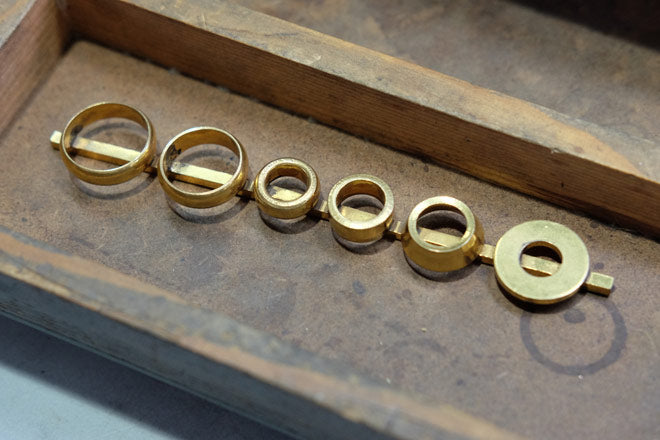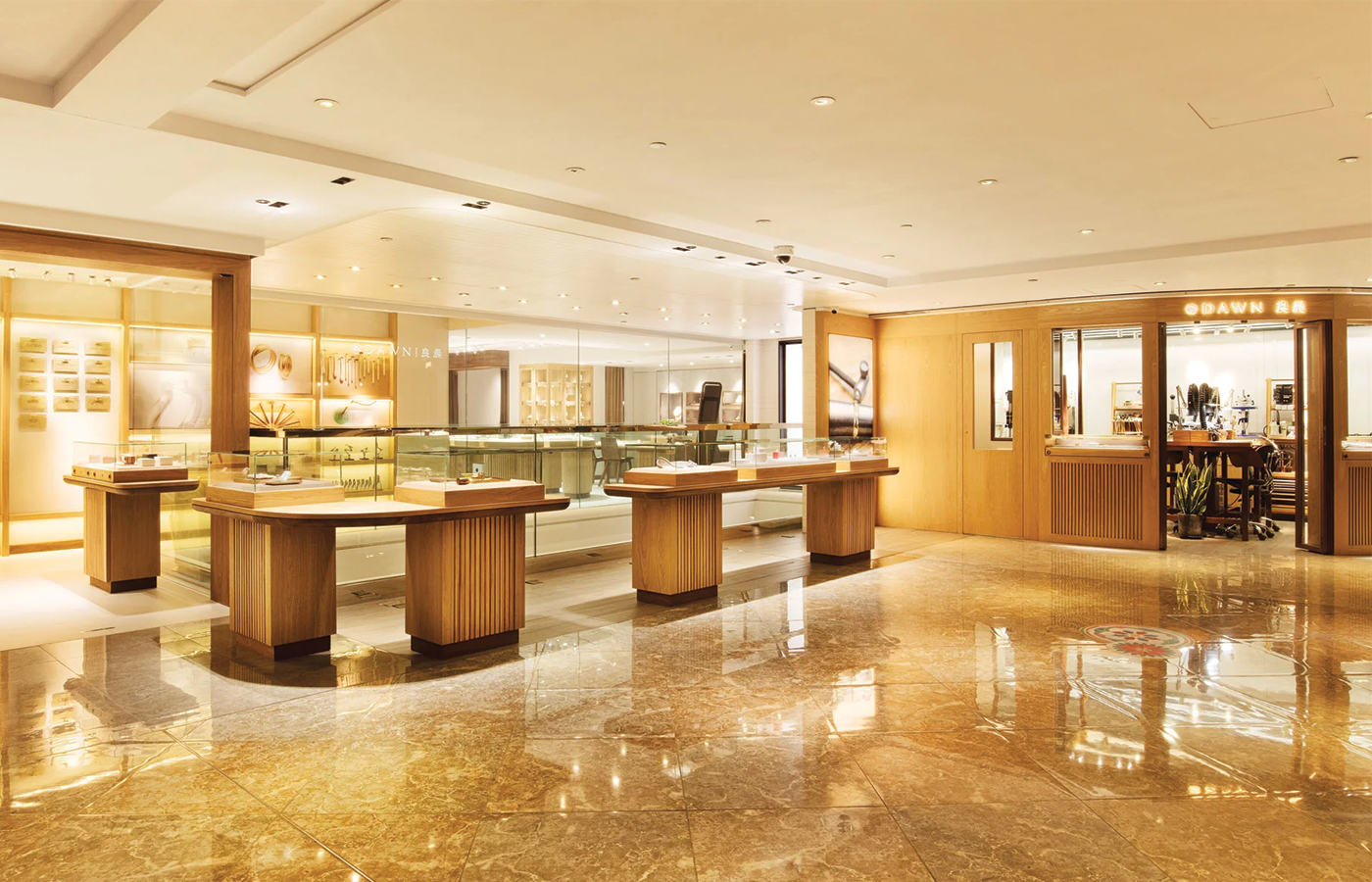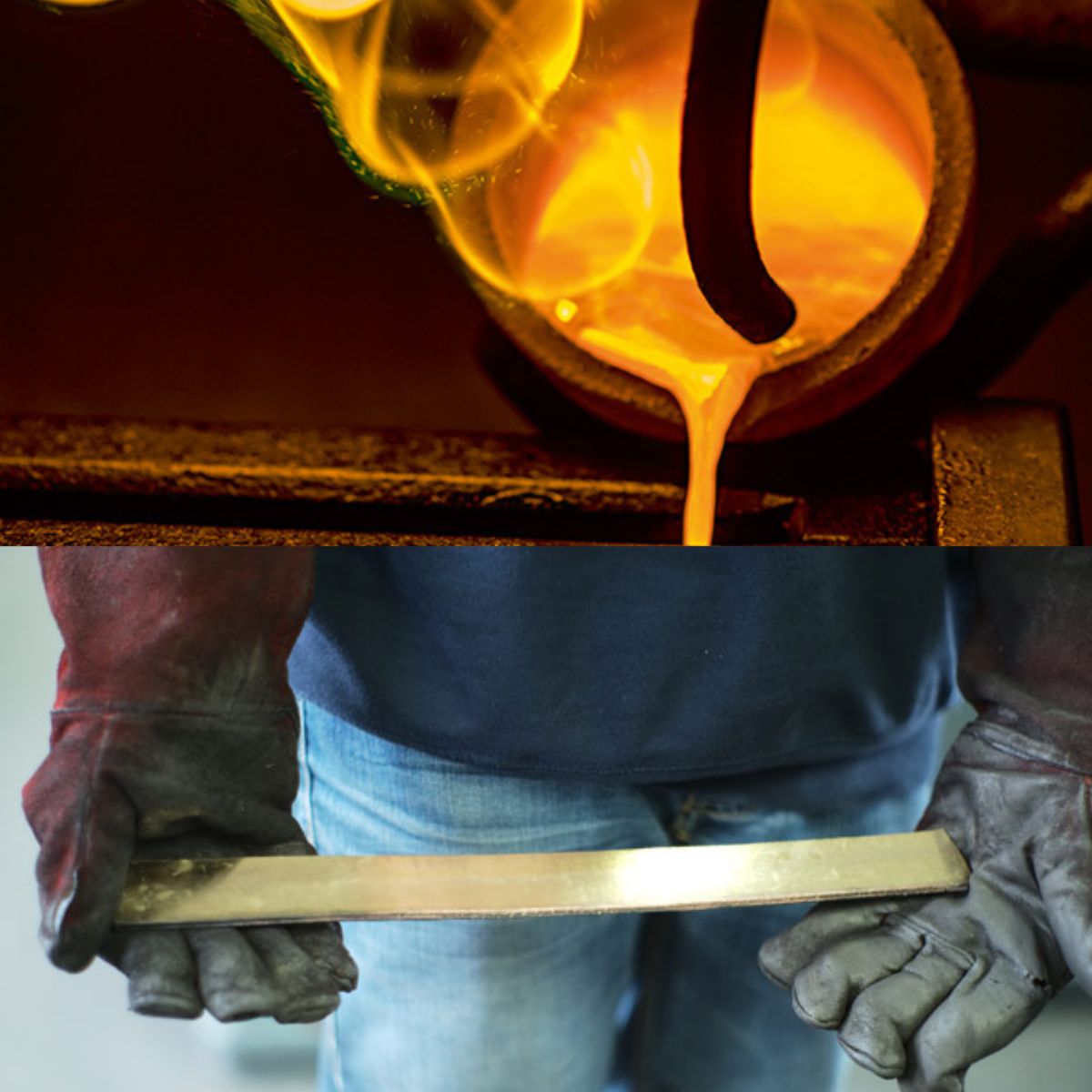
Preparation
The steps taken in production are important for the Germans who are known for precision, every step is detail-oriented. Before pressing the metal, preparation work has to be done. Niessing has more than 140 years of experience in gold dissolution. The control of metal ratio, temperature, mastery of time, and hardness of metal have strict standards. This is all the basic preparation for melting high quality metal.
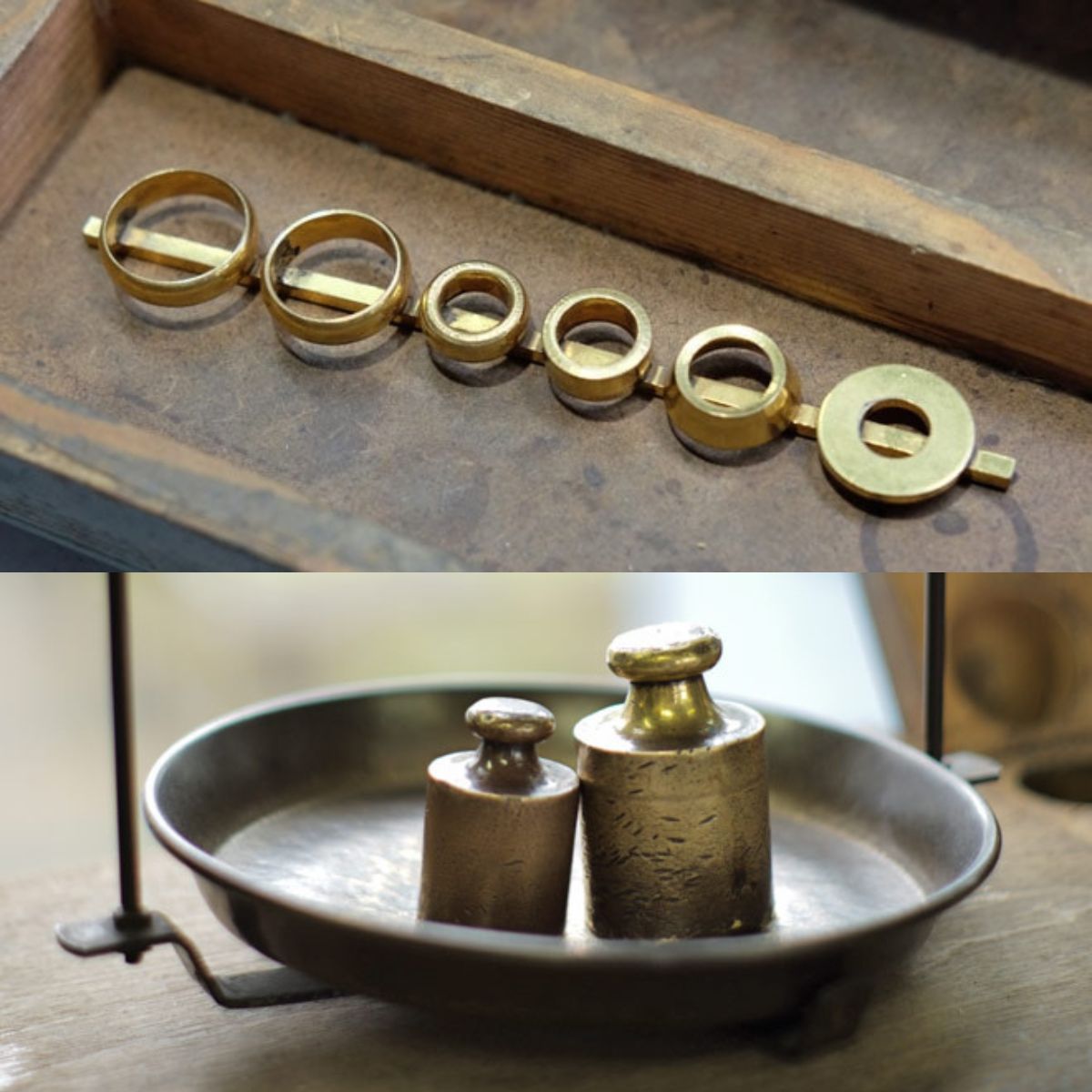
The Benefits of Press Forming
Generally speaking, ring made by press forming has two advantages: rich in texture and hardness. The process of press forming tightens the physical particles of the ring metal. Two different German manufacturers can produce a ring that look the same, however, the ring created by the finest gold manufacturer like Niessing can have a very different texture, when compared to the one made by a lesser manufacturer through tube-cutting approach. When choosing a ring, don’t be shy to try out different ones and feel them between your fingers. When you do it, you will understand how gold density can influence the quality of a ring. In terms of hardness, rings created by press forming is very strong and will not be deformed unless it is subjected to immense pressure, that means the ring is relatively resistant to wear-and-tear too. Daily-wearing will only cause shallow scratch marks on the surface, and the original appearance can be restored easily with basic re-polishing.
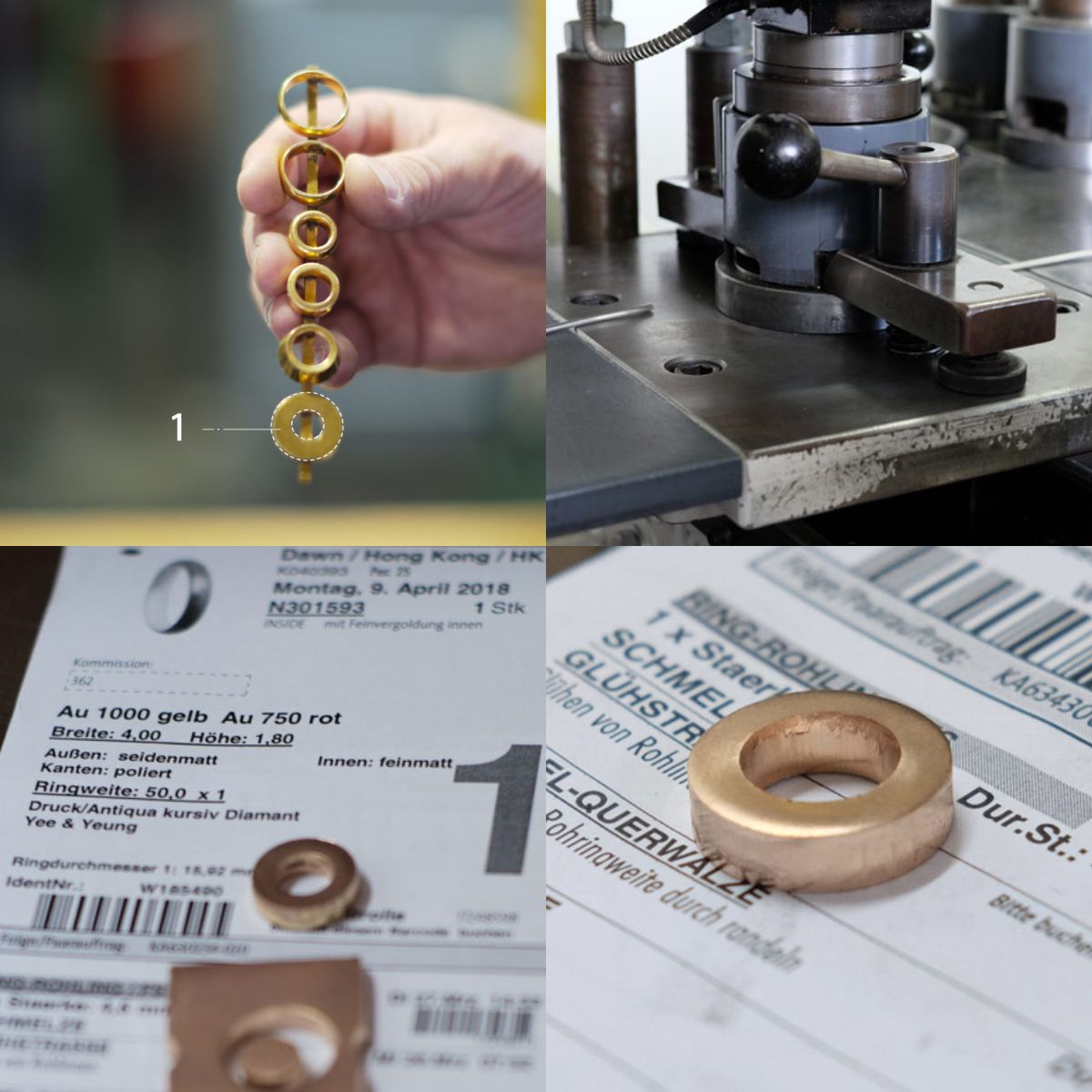
1. Disc Cutting
The first step of the press forming is to cut out metal pellets with a cutting machine. You may not know that metal compression has already started before this step. The density of metal will keep being tightened in different procedures along the way.

2. Press Form
After flattening the metal pellet, it will be pressurized by machine again to raise the density of the gold particles.
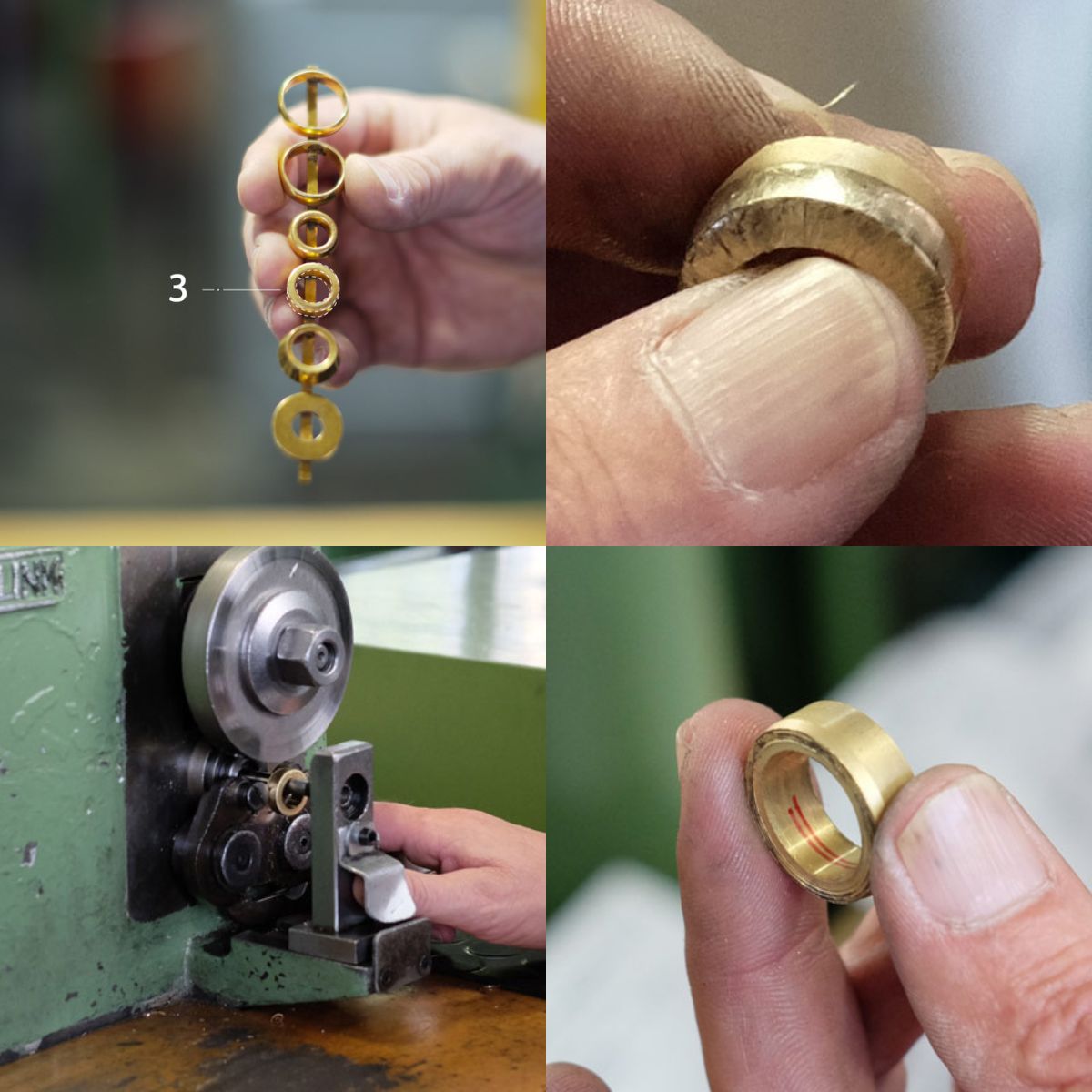
3. Flattening
The pressed ring will be flattened by machine again, but this time the shape will appear closer to a ring. The density of the metal is pressed repeatedly during this process. After the ring takes the basic shape, a Niessing serial number will be etched on it.
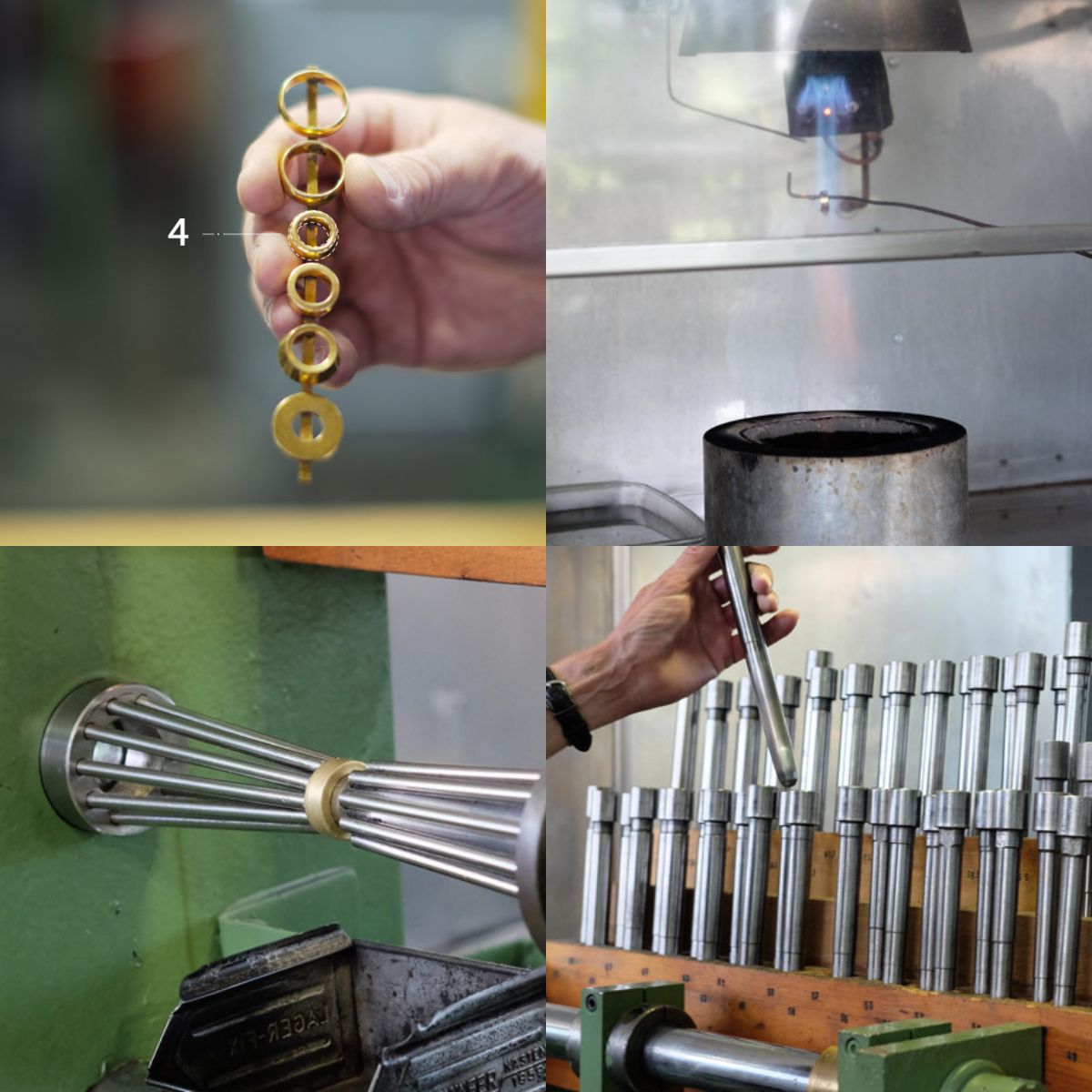
4. Enlarge & Reduce
How big is your finger? Depending on the size ordered, goldsmith will expand or shrink the ring to prepare for the next step. As the ring becomes very dense after being pressed several times, it has to be annealed for expansion to meet the ductility required for modification.
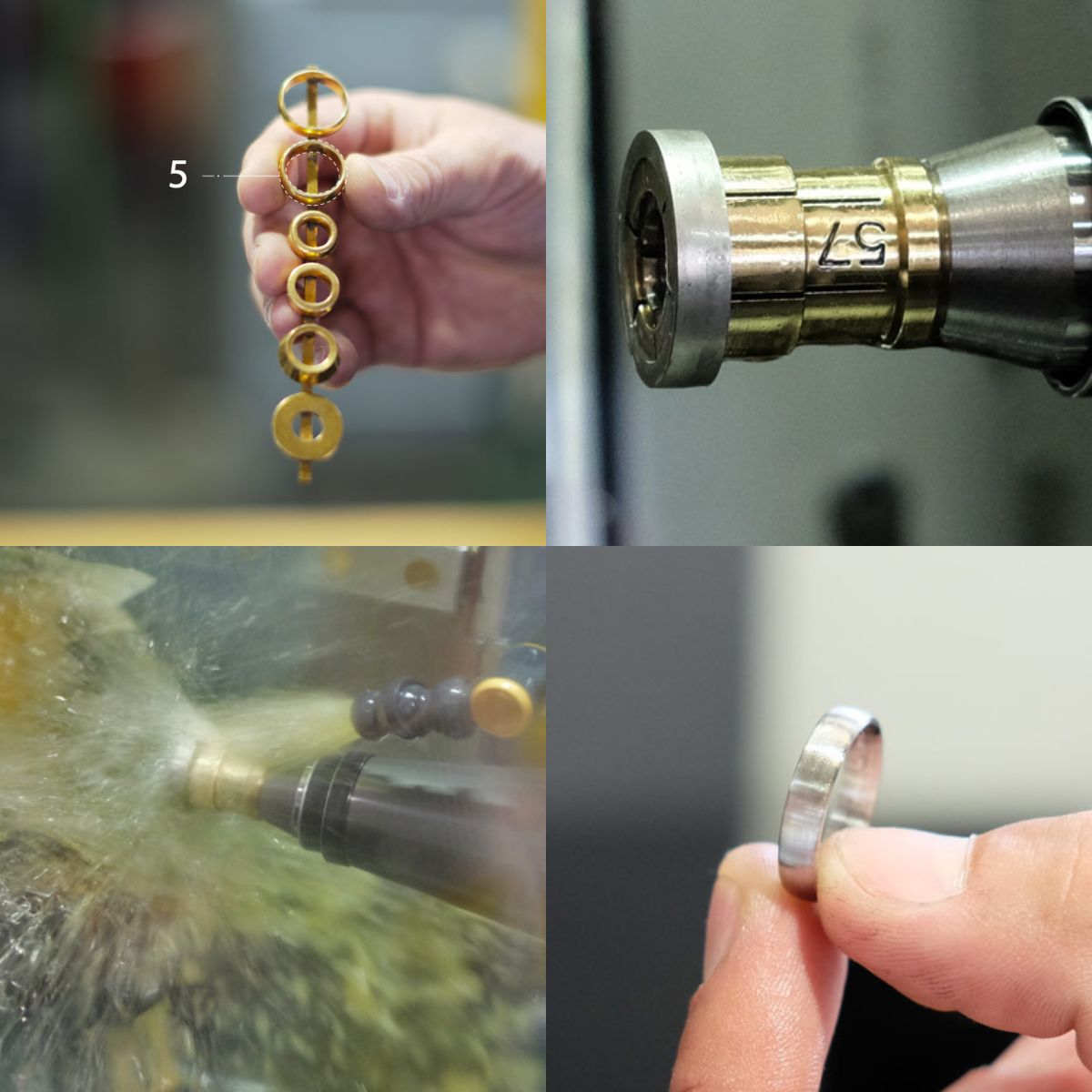
5. CNC Cutting
How do they make the ring according to the profile you chose? Different Niessing ring shapes are achieved by CNC cutting technique, no wonder all their rings are so comfortable to wear!
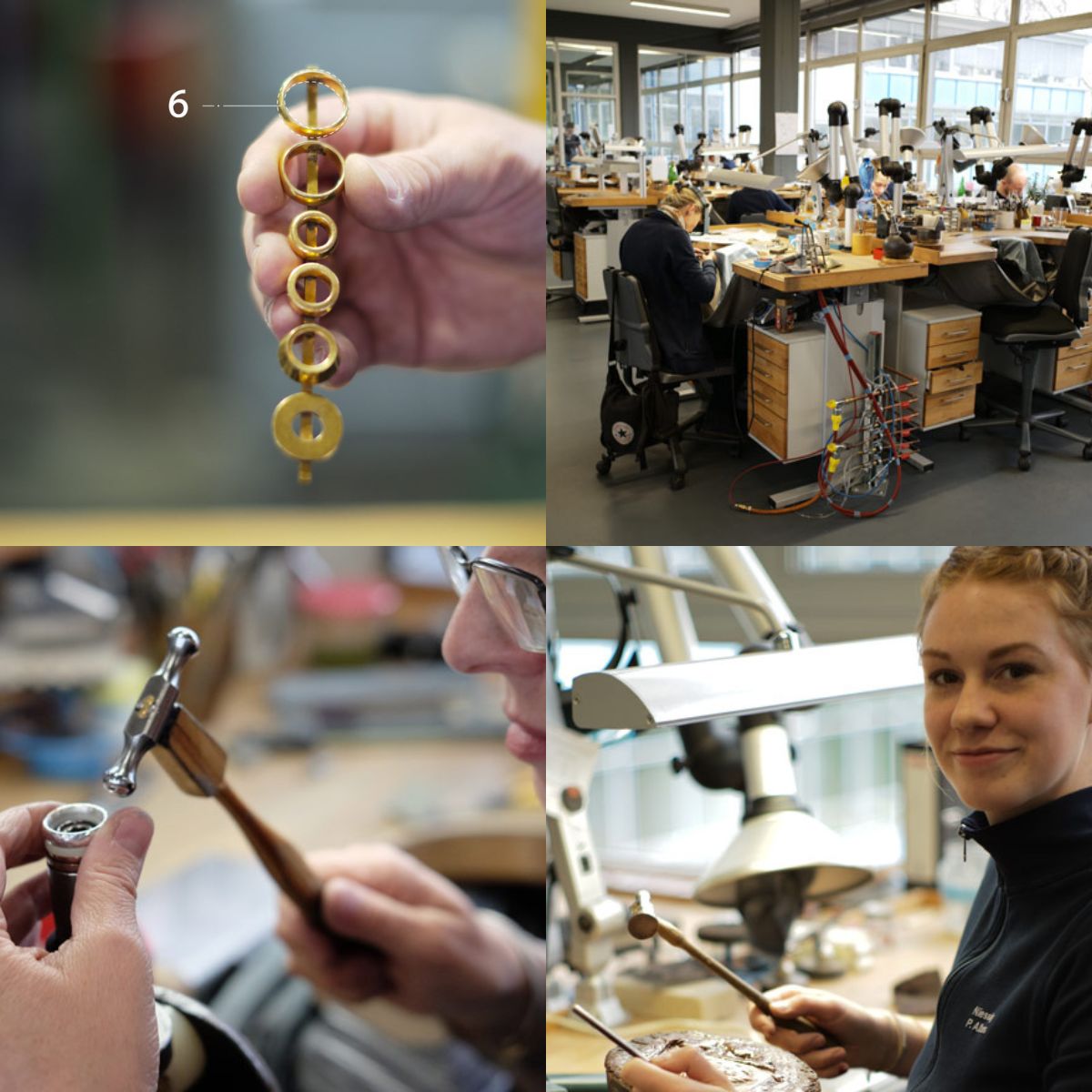
6. Goldsmithing
When a ring takes its basic shape through a series of pressing and cutting processes, it will be transferred to the goldsmithing department and be handled by the goldsmith.

Lifetime Quality
Through the introduction of press forming in this chapter, we hope your understanding towards high-quality ring production technology has been deepened! If you are pursuing a perfect wedding ring in the simplest form, remember to pick one produced by the highest quality of forming technology – Press Forming, and let them create a ring to accompany you forever.



